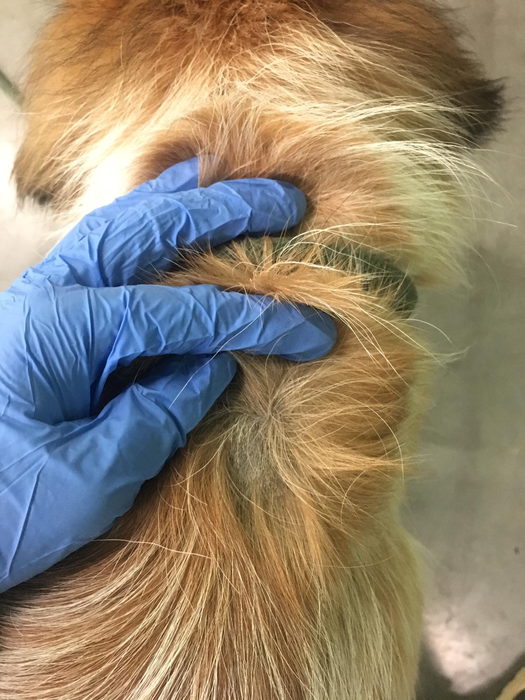Despite the good care, a shelter can be a stressful environment for dogs. Researchers at Utrecht University investigated if the amount of the hormone cortisol in hair indicates the levels of stress that dogs experience before, during and after their stay in the shelter.

Credit: Photo: Janneke van der Laan
Despite the good care, a shelter can be a stressful environment for dogs. Researchers at Utrecht University investigated if the amount of the hormone cortisol in hair indicates the levels of stress that dogs experience before, during and after their stay in the shelter.
There is no difference between the cortisol levels of dogs when they enter the shelter and the control group of domestic dogs. After six weeks in the shelter, cortisol levels in the hair appear to have increased by one-third (on average from 16 pg/mg to 21.8 pg/mg). In measurements six weeks and six months after adoption, cortisol levels lowered, moving in the direction of the values at admission to the shelter. The results were published in the scientific journal Scientific Reports on 21 April 2022.
Cortisol in hair
The stress hormone cortisol accumulates in hair, in humans but also in animals. By measuring cortisol levels in hair, researchers can get an idea of the stress response and recovery over weeks or months – depending on the length of the hair examined. This technique has been used extensively in humans and other species, and some fifteen scientific studies have been carried out in dogs so far.
“In addition to the cortisol measurements in hair, we also measured cortisol values in the dogs’ urine. This gives a short-term picture while the hair measurements show the long term”, researcher Janneke van der Laan explains.
To the shelter every day
The researchers examined hair of 52 shelter dogs at four moments: just before admission, after six weeks in the shelter, six weeks after adoption and six months after adoption. They compared the cortisol values before admission with those of twenty domestic dogs, which were similar in terms of breed, age and sex.
Van der Laan: “We took daily measurements in the shelter for over a year. After adoption, the new owners – after clear instructions – cut the dogs hair and sent it to us. They were helpful and enthusiastic, and were very interested in what their dog had experienced before adoption.”
More cortisol in small dogs
A surprising result is that smaller dogs generally have higher cortisol levels than larger dogs. “We have also seen this pattern in previous studies, for example in a study on the resting pattern of shelter dogs. We don’t have a clear hypothesis about why that is, but it is interesting and is an area of focus for future research.”
Well-being in shelter
All the examined shelter dogs were in the same shelter. Of course there are significant differences between shelters, not only within the Netherlands but also internationally. In The Netherlands, dogs are usually kept individually, while in other countries they are often kept in groups.
“We know that a shelter is not a stress-free environment for dogs, even though staff members do their best to achieve the highest possible welfare,” Van der Laan says. “Even if you organise a shelter in the best possible way, there are still stress factors, such as crowds of other dogs and not being able to go outside as often as usual. And most important: the dog is gone from their old, familiar environment.”
The shelter in this study has a pioneering role in improving the welfare of dogs: they use glass walls instead of bars to reduce noise pollution for the dogs, for example. “The fact that we measured an increased amount of cortisol even in this shelter, suggests that this will also be the case in other shelters,” Van Der Laan said.
Journal
Scientific Reports
DOI
10.1038/s41598-022-09140-w
Method of Research
Experimental study
Subject of Research
Animals
Article Title
Evaluation of hair cortisol as an indicator of long-term stress responses in dogs in an animal shelter and after subsequent adoption
Article Publication Date
21-Apr-2022




